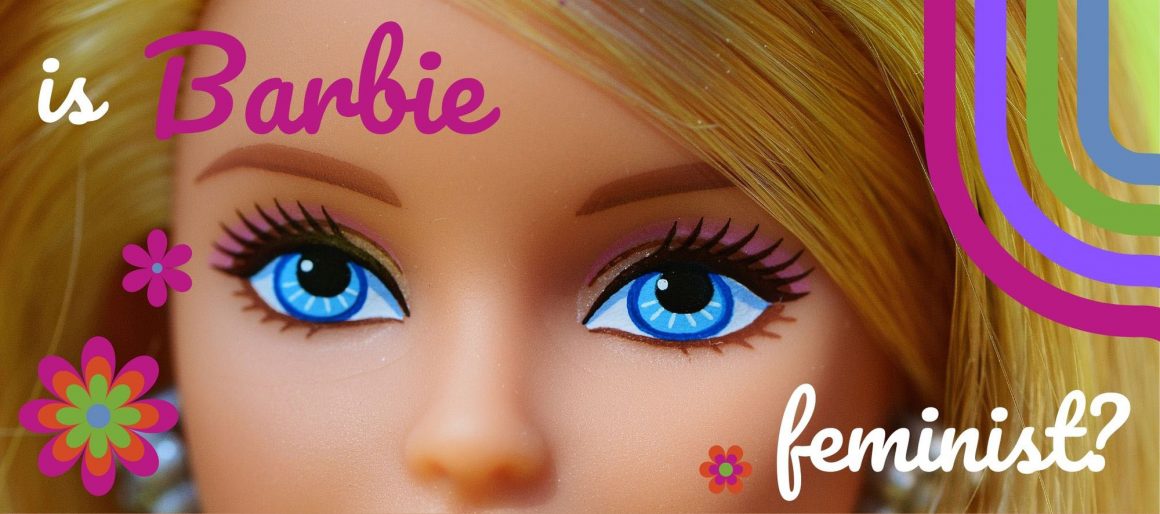
Is Barbie a feminist icon?
By Ava Zardynezhad, August 5 2022—
With the resurgence of popularity for the Barbie film franchise through TikTok and the new upcoming movie starring Margot Robbie, I’ve been thinking a lot about this beloved doll and character. For years, Barbie has been dismissed as a feminist character. Iconically, the Danish band, Aqua, made a reputation for Barbie as a blonde, bimbo girl in a fantasy world. Barbie has been criticized as a challenge to the feminist movement due to the emphasis the dolls put on appearance as well as the brand of femininity they advertise and the gender roles they reaffirm for younger generations. But, should Barbie really be considered a feminist icon instead?
The first Barbie was launched in 1959. This doll was designed by Ruth Handler who co-founded Mattel with her husband, Elliot. She created the doll when she saw an opening in the toy market for adult-bodied dolls. Gendered toys that were popular and available in the 50s included Mimi dolls and baby dolls, neither of which looked like an adult. Most toys advertised to young girls promoted home-making skills or beautification in a conventional sense. These toys often came in the form of doll houses, cleaning tools or vanity sets. Barbie came out at a time when young people were indoctrinated to assume the gender they were assigned by way of their sex at birth and the roles that came with it. Toys like Legos, racing, shooting and sporting games were more often advertised towards little boys. Games reflected social structures and expectations, so it was no wonder that boys were able to be more in their fantasy worlds than girls. These toys created opportunities for young boys to role play — an essential part of child development — and to show creativity. Barbie created an opportunity to do just that for girls.
Despite her controversial beginnings, Barbie has tried hard to become a role model to young people, especially girls. Since her debut in 1959, Barbie has had over 200 different careers. In 1965, Barbie went to the moon. In 1985, Barbie became a CEO. In 1992, Barbie ran for president. In recent years, Mattel has tried to be more inclusive, creating a line of Barbie fashionistas with different body types, skin tones, hair styles and eye colours. In 2018, Barbie took on the role of inspiring women. But there have also been times that Barbie has failed.
Mattel has long been criticized for three main concerns — the lack of diversity among Barbie dolls, how these dolls reinforce heteronormative standards, as well as how they influence children’s body image. Barbie has always been White and blonde. No matter how much effort goes into diversifying Barbie, Mattel will always come up with a doll that is quintessentially White and blonde. As noble as attempts to diversify Barbie are, they can oftentimes be harmful. A most recent example is the Creatable World line, which includes “gender-neutral” Barbies. According to Mattel, these dolls are intended to be “relatable” as opposed to “aspirational.” They no longer have an adult body, but a “youthful, gender-neutral appearance.” Not only do these dolls sell a diminutive notion of the gender spectrum, they can potentially serve as tools of misinformation, harming gender minorities and skewing children’s understanding of gender. Moreover, this seemed more like a marketing scheme to stay relevant on Mattel’s part since after introducing Ken in 1961, Barbie has been reflecting and endorsing heteronormative standards of our society.
The issue of Barbie’s figure has been a topic of much debate and study over the years. Studies have shown exposure to Barbie dolls increases thin-ideal internalization among school-aged children. Mattel has proven time and time again the intentionality of Barbie’s physique through their dolls and campaigns. In 1965, Slumber Party Barbie came with a scale and a book on weight-loss, the only advice in which read, “Don’t eat!” Though Mattel has been introducing Barbies with diverse body types, studies show that kids still prefer dolls with thin bodies.
It is important to consider that a lot of Barbie’s marketing changes with how our society does. For instance, in the 90s, Teen Talk Barbie spoke a number of phrases that were teen-talk stereotypes. In 2022, Barbie has to be progressive to be popular. It seems as though the doll’s brand of feminist changes with the trend — as long as it sells, Barbie can be anyone and anything.
With the introduction of the movie franchise in the early 2000s, however, Barbie underwent a transformation. These movies helped humanize Barbie and reclaim her as a feminist hero. In these films, Barbie’s character always solved her own problems, had healthy, nuanced relationships with other female characters, reflected on her own actions and behaviours, admitted when she made a mistake and was accepting of those around her, just the way they were. I think that’s what’s making people hopeful for the new installment of Barbie, directed by everyone’s favourite feminist, Greta Gerwig.
Over the years, Mattel has made some mistakes, but it has also tried to create and advertise Barbie as a feminist. At the end of the day, though, there is one thing we must recognize about Barbie — her brand of feminism is a White, cis-gender, heterosexual one. Today, we’re well into the fourth wave of feminism, one that is global, virtual and intersectional. Barbie might have been ahead of the game in her time, but in ours, she’s long fallen behind. I find it hard to be hopeful for Mattel and for Barbie. This doll is still operating on a foundation that was set 60 years ago and is in dire need of a major change. But, I will still hold out some hope for the new Barbie movie, waiting to see if it was a step in the right direction.
This article is part of our Opinions section.
